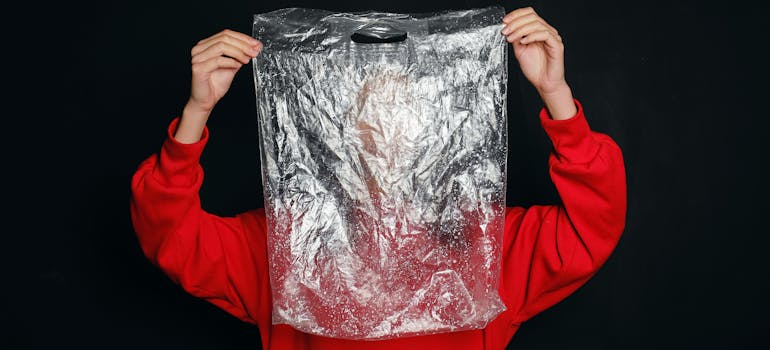Linens and quilts can have immeasurable value. However, you should know that heirlooms inherited bedding, and artistic pieces that were handcrafted by loved ones require special handling and storage as you prepare for a move. So, before preparing your finest fabrics for a reputable company such as Fairfax Transfer & Storage to transfer or store them, take a look at what you need to know about moving linens and quilts.
Clean them first
Packing dirty or soiled bedding may solidify the stain, making it nearly impossible to remove in the future. Stains on fabric can oxidize while in storage, leaving behind a yellow or brown patch or spot. They can also smell, leaving an unpleasant scent that grows to fill your storage unit. So, before you entrust some of the residential movers in Northern VA with your prized heirlooms, make sure they are free of any dirt.
While some linens and bedding are machine washable, a DIY approach can fade fabrics and solidify stains (instead of removing them). Therefore, before storing your sheets, pillowcases, comforters, shams, or quilts, consult a professional dry cleaner for the correct cleaning procedure. Here are some additional tips for ensuring your bedding is properly cleaned before storage:
- Check care labels. Always read the care labels on your bedding for specific cleaning instructions to avoid damaging delicate fabrics.
- Spot cleaning. For small stains, spot cleaning can be effective. Use a gentle cleaner appropriate for the fabric type, and test it on a small, inconspicuous area first.
- Air out. After cleaning and before packing, air out the items in a well-ventilated area to ensure they are completely dry and free from any odors.
- Use mild detergent. If machine washing is safe, use a mild detergent and set your washer on a gentle cycle to protect the fabrics.
- Avoid bleach. Bleaching can weaken fibers and cause yellowing over time, especially in natural fibers like cotton and linen.
- Iron carefully. If needed, gently iron your linens at the appropriate heat setting to remove wrinkles without scorching the fabric.

Avoid pulp products
When storing or moving heirloom linens and quilts, it’s important to choose the right materials for packing and storage to ensure their preservation. Incorrect materials can cause significant damage. If you are using a professional packing service Northern Virginia companies offer, you don’t have to worry about this. These experts know what they’re doing.
The risks of using pulp-based products when moving linens and quilts
Using tissue, cardboard, or other paper-based products to layer between your heirloom textiles may seem like a protective measure. However, this can harm the fabrics. Many wood pulp–based products release volatile organic gases when they come into contact with linens. These gases can cause yellowing or staining of the fabric, which is often irreversible. Storing your linens in cardboard boxes or placing them in cedar (or other wood) chests and drawers can produce similar detrimental effects.
Recommended alternatives
To safely separate and wrap your linens, opt for specialized, acid-free tissue paper available from conservation suppliers, which does not emit harmful gases. This type of material is specifically designed to prevent the chemical reactions that lead to staining and degradation of fabric.
Proper short-term storage practices
If your linens or quilts need to be boxed temporarily, for example during a move, using standard boxes for a few hours should not pose a significant risk. If you don’t know which ones, you can consult the Fairfax County movers you’re hiring. However, it’s essential to unpack these items as soon as you arrive at your new home. Store them in a cool, dry closet, or consider using chemical-free batting tubes for longer-term preservation. This approach minimizes any chance of damage and maintains the quality of your precious items.

Remove plastic bags
While it might be tempting to use plastic bags for the storage and moving of linens and quilts due to their accessibility and perceived protection, this choice can lead to significant damage. Therefore, you should study the risks associated with plastic bags, and explore better alternatives. That’s the best way to preserve the quality and longevity of your textiles.
Risks of using plastic bags when moving linens and quilts
Plastic bags or garbage bags may seem like ideal storage options. Unfortunately, this supposed solution can have detrimental effects on your bedding or heirloom quilts. When these textiles are stored in plastic, the material can trap moisture, creating a damp environment that actively degrades the fibers of the quilts or linens. This not only makes them appear old or worn but can also lead to staining and yellowing. More critically, the moisture can foster fungal growth, including mold and mildew. These fungi are not only difficult to remove but also produce unpleasant odors and can create an unhealthy or allergy-inducing environment.
Alternatives to plastic
If you prefer to move your linens and quilts in bags rather than boxes, opting for white fabric bags is a far superior choice. Fabric bags allow for better air circulation around the textiles, helping to prevent the accumulation of moisture and the resultant growth of mold and mildew. Additionally, using breathable, chemical-free storage options such as cotton bags or specially designed storage cases for textiles can provide further protection. These alternatives not only maintain the integrity of the fabric but also ensure that the items remain in a pristine, display-worthy condition.

Control temperature when moving linens and quilts
Along with plastic bags, quickly changing temperatures can also damage delicate bedding. If you will be moving from extreme cold to warm or hot temperatures, moisture may form and damage the fabric.
While you can’t control the temperature outside, you can control the thermostat in interior spaces. Move your linens and heirloom quilts as quickly as possible, immediately unpacking them in the temperate space of your new home. To further protect your textiles from temperature-related damage, consider these strategies:
- Climate-controlled storage. If storing items for a long period, use a climate-controlled storage unit, such as storage Lorton VA options, to maintain a consistent environment.
- Avoid direct heat sources. Keep fabrics away from radiators, heating vents, and direct sunlight which can degrade fibers and cause fading.
- Use moisture absorbers. In humid environments, include silica gel packets or other moisture absorbers in your storage containers to prevent dampness.
- Insulate the storage area. Ensure that your storage area, such as an attic or basement, is well insulated to minimize temperature fluctuations.
- Monitor humidity levels. Use a hygrometer to keep track of the humidity levels in your storage space, aiming for a range between 35% and 50% humidity.
- Ventilation. Ensure good air circulation around stored items to prevent mold and mildew growth due to trapped moisture.
Implementing these additional precautions will help you you can significantly reduce the risk of temperature and humidity damage to your precious linens and quilts during transport and storage.

Stop stacking
After the move, you’ll need to store your linens and quilts, especially if they have traveled long with the help of some of the moving companies Northern VA has to offer. While you can fold linens and quilts temporarily during the move, the pressure from stacking them over time can create creases that even a professional may find challenging to remove.
Placing acid-free tissue inside of folded quilts can reduce wrinkling or creasing. You can also roll the quilts, instead of stacking them.
Keep color away
When you’re moving linens and quilts, you should know that non-colorfast papers or fabrics can bleed — especially when exposed to moisture or humidity. Never pack bedding with colorful papers, newspaper, or fabric to keep it safe during the move. This tactic may have the opposite effect, ruining your delicate linens instead of protecting them.
Also, if the paper or fabric gets wet during the move or you leave it there after the move, the color can transfer onto your cherished linens, staining them forever.
Hire reliable movers
Choosing the right movers is crucial when you’re transporting valuable items like linens and quilts. It’s important to ensure the company you hire is trustworthy and skilled in handling delicate items. The moving industry has its share of unscrupulous operators who might offer a seemingly low price only to inflate it unexpectedly after taking possession of your belongings. To avoid such situations, learn about moving scam prevention beforehand. Look for movers with positive reviews and clear, upfront pricing. Companies that are well-regarded for their professional handling of heirloom fabrics are the way to go. Always check a mover’s credentials and ask about their specific practices for handling and storing delicate items. By taking these steps, you not only protect your cherished textiles but also ensure a stress-free moving experience.
Securing your legacy with these essential tips
When you’re moving linens and quilts, you need to carefully select packing and storage materials to preserve your precious heirloom. The sentimental and historical value of these items means avoiding harmful materials like plastic bags and ensuring a controlled environment. Proper cleaning, the use of appropriate materials, and attention to environmental conditions like temperature and humidity are essential. By following these practices, you can maintain the pristine condition and honor the legacy of your cherished textiles.


